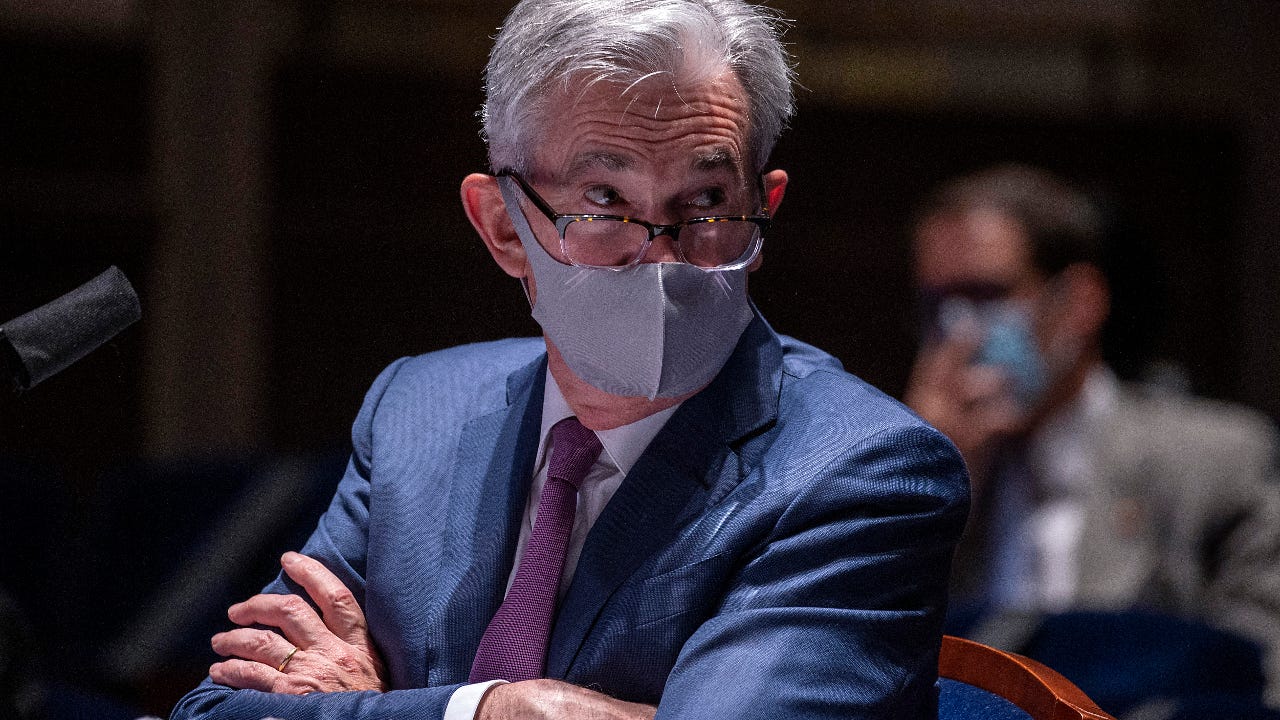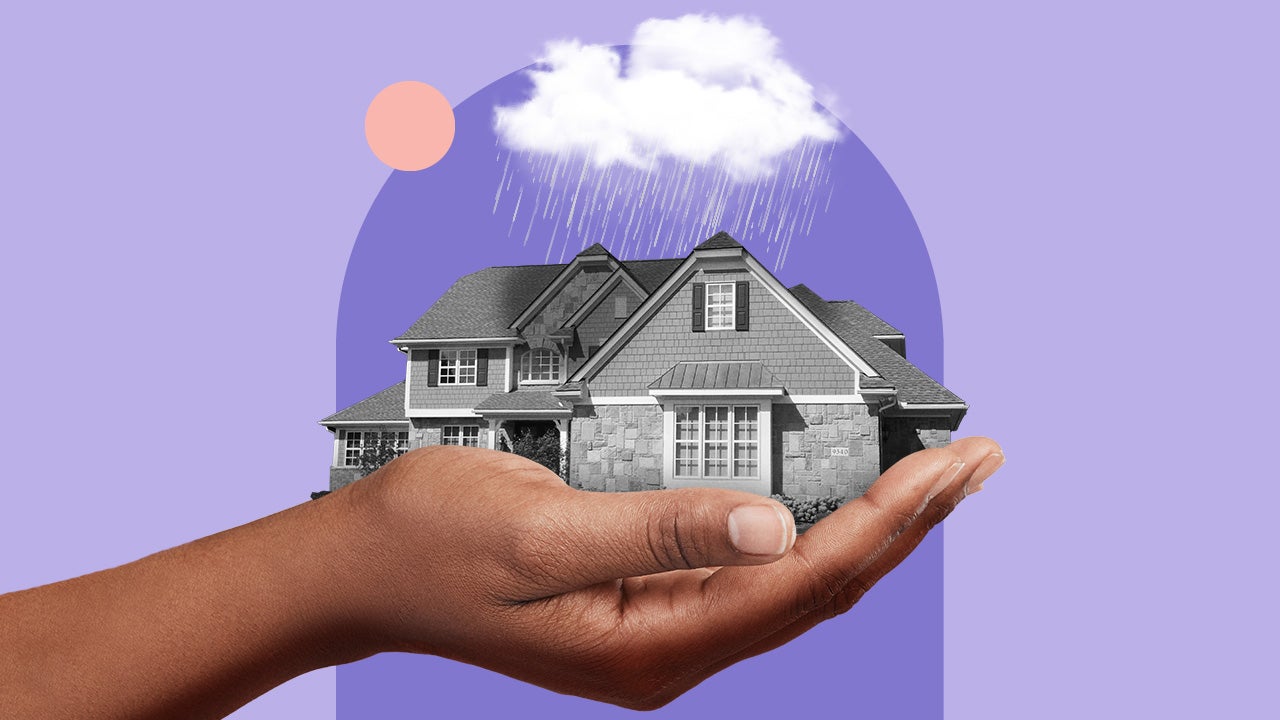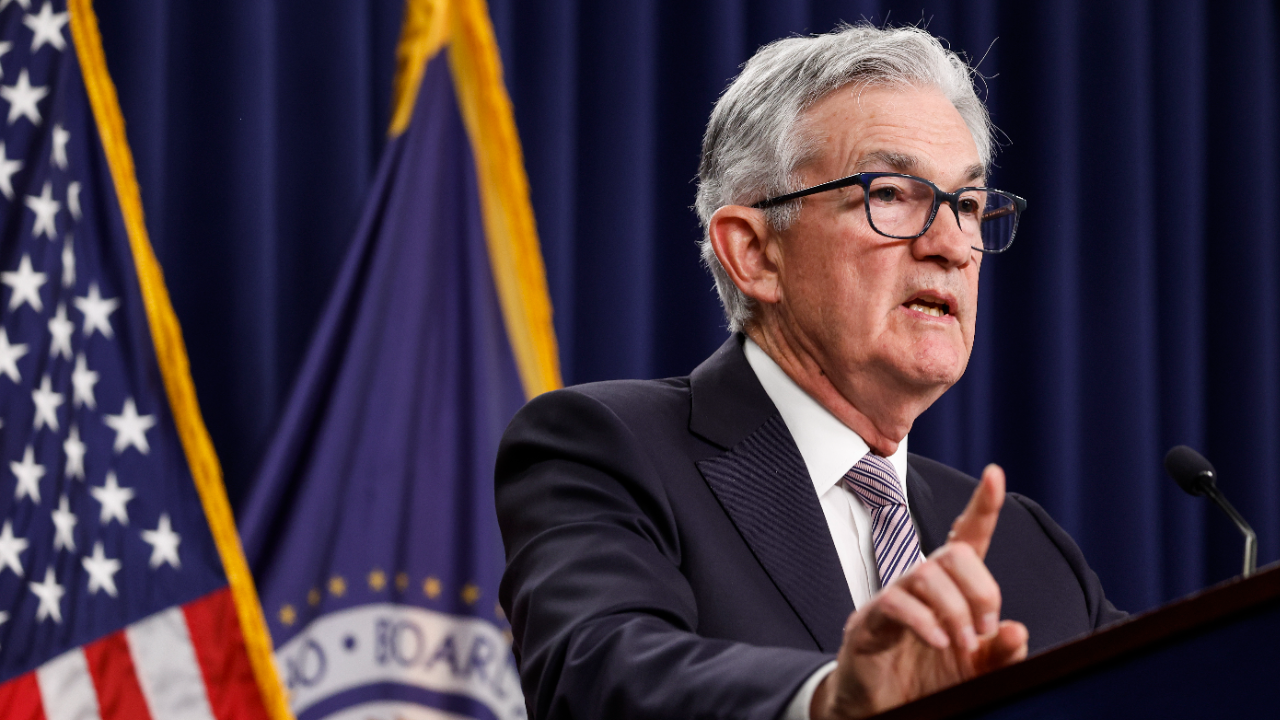Fed leaves rates alone, says economy will ‘depend significantly on the course of the virus’

The Federal Reserve kept its key interest rate unchanged and stressed that it’s primed to keep pumping more stimulus into the wounded U.S. economy until it fully rebounds from the coronavirus pandemic – a process that’s bound to take several years given the extent of the financial and economic trauma.
The U.S. central bank announced Wednesday that it would leave its benchmark federal funds rate in the current target range of 0-0.25 percent. For consumers, it means that savings accounts and certificates of deposit (CDs) aren’t going to yield you a higher return anytime soon, though credit card or home equity lines of credit (HELOC) borrowing are unlikely to do anything but get cheaper.
“The path of the economy will depend significantly on the course of the virus,” Fed officials wrote in their post-meeting statement on Wednesday, reiterating from past statements that “the ongoing public health crisis will weigh heavily on economic activity, employment, and inflation in the near term, and poses considerable risks to the economic outlook over the medium term.”
The move was universally expected, with U.S. central bankers in June foreseeing that policy would remain pinned at rock bottom for years to come.
It’s a consequence to the devastation that the coronavirus crisis has caused, which upended a decade-plus long expansion in a matter of weeks while putting the highest number of workers out of a job since the Great Depression. It also reflects the unlikelihood that the financial and economic calamity will be reversed anytime soon amid unabating headwinds.
“The Fed has slashed interest rates and kept credit flowing to consumers, businesses, and municipalities,” says Greg McBride, CFA, Bankrate chief financial analyst. “But they can’t tame the virus or manufacture demand and that’s what the economy desperately needs in order to bounce back.”
A darkening economic backdrop
In one of the few changes made to the Fed’s statement, officials acknowledged that “economic activity and employment have picked up somewhat in recent months but remain well below their levels at the beginning of the year.”
That economic backdrop might be threatened, with a resurgence of coronavirus cases in states such as Florida, Texas and Arizona threatening the U.S. economy’s surprising, albeit shaky, rebound. The Fed’s reference to the coronavirus’ economic effects in its post-meeting statement highlights that it’s a substantial risk.
After hiring in May and June showed a quicker than expected snapback, the number of Americans applying for unemployment benefits increased last week for the first time since March. It likely suggests that stages of the recovery have hit a pause as many states have rolled back reopening plans that put renewed limits on commercial and consumer activity.
Federal Reserve Chairman Jerome Powell pointed out in a press conference that real-time data the Fed tracks — mainly through debit and credit card transactions as well hotel occupancy rates — shows a slowdown in the pace of the recovery since cases began spiking again in June. High-frequency labor market indicators also foreshadow subdued job growth, though officials won’t know that for sure until the Labor Department’s official employment report.
“On balance, it looks like the data are pointing to a slowing in the pace of the recovery, but it’s too early to say both how large that is and how sustained it will be,” Powell said.
U.S. central bankers aren’t due to release their updated economic projections until they next meet in September, though previous forecasts from June showed that officials foresee elevated unemployment into 2022 and the U.S. economy shrinking by 6.5 percent this year – a bleak forecast that could end up being delusory if there’s enough of a resurgence in the novel coronavirus to prompt another near-total economic shutdown.
A report showing economic activity in the second quarter of 2020, due Thursday, is poised to show that the financial system contracted by the most on record. A widely watched tracker out of the Atlanta Fed shows gross domestic product (GDP) shrinking by 32.1 percent, while private sector forecasts are penciling in a 34.6 percent decline. Though eye-catching, the question isn’t so much how April, May and June have fared, but how the months ahead are looking.
Fed extends emergency credit programs by three months
Illustrating the severity of the crisis, the Fed on Tuesday extended 11 of its 13 emergency credit programs for three months. The unprecedented catalog of programs designed to funnel loans to key financial players from small businesses to corporations were originally set to taper off in September. The two programs that didn’t get an extension – one geared toward helping states and municipalities with financing and another aimed at buying a wide range of securities from firms licensed to transact with the Fed – were set to expire at the end of December and March of 2021, respectively.
The Fed in its Wednesday announcement also extended its dollar swap line with other foreign central banks, as well as a repo facility for international monetary authorities, through the end of March.
Though many of the programs haven’t had substantial take up, they’ve proven to be particularly useful for increasing confidence among investors and market participants alike that the Fed is both willing and able to take unprecedented steps to calm the dysfunction and jumpstart the rebound.
The mere announcement of the program allowed corporations from AMC to SeaWorld to issue new corporate debt on the market at a lower rate than would’ve been initially expected, a sign that investors were comfortable buying up those assets thanks to the Fed’s actions.
The Fed’s credit programs are made possible with a backstop of funds from the Treasury Department, which are earmarked by Congress. Though Powell didn’t acknowledge whether Congress should funnel more funds their way in the next round of stimulus, he said it’s important those programs remain operational.
“It’s important that they still stay in place until we’re very confident that the turmoil from the pandemic and the economic fallout are behind us,” Powell said.
Given just how wobbly and uncertain the road ahead looks, the Fed’s programs could prove to be a key player in ensuring markets don’t have another meltdown similar to what happened in March.
A steep sell-off that resulted in the S&P 500 falling more than 33 percent from its peak pushed U.S. central bankers farther and faster than ever before to calm the chaos, with officials taking steps that included slashing interest rates down to zero at two emergency meetings within 13 days of each other while also establishing an unlimited bond-buying program and injecting trillions of dollars into the financial system.
Markets have mostly rebounded since those March lows, and experts suggest the Fed’s actions fueled that revival. Meanwhile, Treasury yields across the curve have plunged to their lowest levels on record.
Fiscal policy: Key to watch
While the Fed continues to stress that it can and will do more to rescue the economy, policymakers might be backed into a corner if the U.S. experiences a second wave of the virus. Officials have repeatedly emphasized they see no reason to take interest rates into negative territory, meaning the Fed’s long-trusted blunt instrument of monetary policy could be limited.
Crucial to how that journey plays out will be fiscal policy – a key offensive player in the U.S. economy’s rebound that Powell has pushed for, despite normally being hesitant.
In testimony before the Senate Banking Committee on April 29, Powell underscored that “this is the time to use the great fiscal power of the United States to do what we can to support the economy and try to get through this with as little damage to the longer-run productive capacity of the economy as possible.” He’s repeated those remarks in other public appearances.
Lawmakers are currently scrambling on Capitol Hill to enact another round of fiscal stimulus before the extra $600 weekly unemployment check expires at the end of this week. Senate Republican leaders on Monday unveiled their priorities in a proposal known as the “HEALS Act.” It differs sharply from what Democrats have pushed for, particularly in the “HEROES Act” that the House of Representatives passed in May.
On the agenda includes reinstating extended unemployment benefits, another round of stimulus checks, aid for states and municipalities and more funds for small business loans. But the former is proving to be the most challenging, with Democrats wanting to re-extend that $600 boost and Republicans concerned it could deter individuals from going back to work.
While still practicing his reticence over specifically commenting on fiscal policy, Powell pointed that unemployment benefits are going to play an important role, even as the economy reopens.
“There won’t be enough jobs for them,” Powell says of individuals laid off from restaurants/bars, hotels and other tourism-dependent firms who will be seeking work while the economy reopens. “They’re going to need support.”
What this means for you
Any steps Congress takes to mitigate the recession will influence how your wallet will fare in the months ahead. It’s worth keeping an eye on Capitol Hill to see where things stand with the next round of stimulus.
But the Fed’s blunt instrument isn’t one to ignore. If you’re thinking about buying a car or a home, you should be able to find competitive rates that are lower than where they were half a decade ago. Meanwhile, homeowners looking to refinance could shave hundreds of dollars off of their monthly payments, freeing up more change to use for other purposes.
“Record low mortgage rates are putting wind in the sails of homebuyers and enabling homeowners to refinance and trim monthly payments in a meaningful way,” McBride says. “The boost to the housing market and consumer spending power are sorely needed in what promises to be an extended economic recovery.”
Use that extra money to juice up your emergency savings, a necessary and important step given the tremendous uncertainty facing the U.S. economy as it rebounds from the coronavirus crisis. Now’s the time to prioritize building up your emergency savings because experts don’t know how long the hardship will last. You’re at a higher risk of losing your job during a downturn, and an emergency savings fund can be a crucial way to backstop your finances if the checks stop coming.
Experts recommend having that money in a liquid and accessible account. Even though savings yields have come down considerably over the past year, you should still be able to find a competitive offer on the market.
If you’re unemployed and worried about losing your extra $600 check, work with any lenders or financial firms you regularly pay a bill to, to see whether you can take advantage of a “goodwill” forbearance program or lower your monthly payment altogether.
Powell again stressed that “the Fed isn’t thinking about, thinking about” raising interest rates and continued to offer up its “full range of tools” for the sake of the recovery, meaning the U.S. central bank will continue acting as a first line of defense between the crisis and your wallet.
“The public needs the support that we’re giving until we’re shown otherwise,” Powell said. “We hope for the best and plan for the worst.”
Learn more:
- Winners and losers from the Fed’s latest decision
- 3 ways savers can handle falling interest rates
- Here’s what to do if you’re still jobless by the time your coronavirus unemployment benefits run out
Featured image by Tasos Katopodis of Getty Images.





